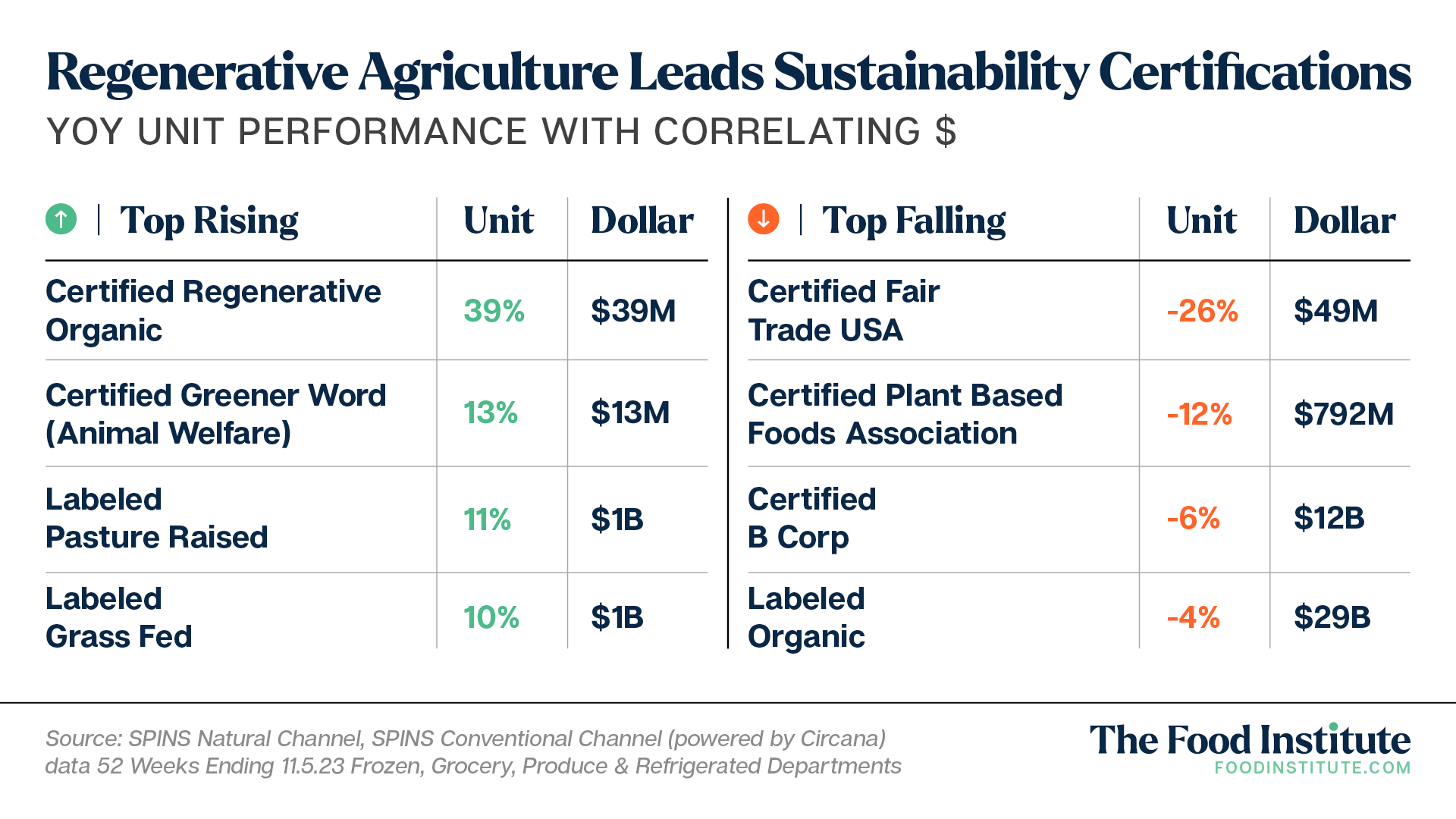This spring, salad chain Sweetgreen added steak to its roster of ingredients. According to the company’s menu details, the Caramelized Garlic Steak recipe features “cuts of grass-fed, pasture-raised steak” from partners with “principles and beliefs rooted in regenerative agriculture.”
Three days after the announcement, the company stock soared 37% in premarket trading. First-quarter earnings garnered praise from analysts who cited the chain’s successful execution of growth strategies including its Infinite Kitchens program, which uses robotic technology, reported MarketWatch.
As William Blair analysts Sharon Zackfia and Matthew Curtis wrote in a note to clients, the impact of adding steak “did not materially influence raised comp guidance” given the recent nature of the rollout, thereby “making steak a de facto positive wildcard for the remainder of the year given potential mix benefit from its premium price point and its opportunity to expand Sweetgreen’s customer base and meal consideration set.”
Move Stirs Climate Concerns Among Consumers
The announcement also garnered strong reactions online, with customers questioning how the new menu addition would impact the chain’s ambitious goal to be carbon neutral by 2027.
Per FAO, beef production is the largest agricultural source of greenhouse gases globally, emitting massive amounts of methane into the atmosphere.
In its statement, Sweetgreen pointed to studies which “bring to light the environmental benefits of pasture-raised cows where grazing promotes enhanced land management, carbon sequestration, and contributes to soil health, making the land more resilient to flooding and drought while boosting nutrient content and flavor.”
Can Regenerative Grazing Offset Beef GHG?
These developments come as interest in sustainable meat production continues to rise across the food industry.
“Consumers have begun to realize that beef production doesn’t have to be bad for the environment,” said Cami Froneberger, director of Sales & Marketing at Harvest Returns.
“As demands for sustainability increased in the beef industry, producers began making changes to their production methods. Many turned to certifications to utilize in marketing their beef to the public that signals the product was raised in a sustainable manner.”
As AFN reports, a large swath of major food companies have made regenerative commitments in 2024, including big meat players like JBS, Tyson, Smithfield, and Hormel.
A key challenge, however, is that “regenerative agriculture” still has no set definition. With multiple companies leaning heavily on PR-friendly sustainability language to describe goals, it’s important to monitor actual acres, dates, practices, and prescriptions.
For instance, for regenerative grazing to be an effective climate solution, certain parameters must be upheld, such as frequently rotating cattle to fresh grazing pastures to allow time for new grass growth.
“Grass should never be more than half eaten to maximize growth and carbon sequestration,” said David Munson, president of Get Real Alliance, adding that many ranchers often leave cattle in the same pasture for months at a time.
Furthermore, despite updated labeling guidelines by the USDA, general animal-raising claims don’t always account for the full lifecycle of grazing cattle, said Jack Ellis, Senior Associate, Agriculture & Food at Cleantech Group.
“In the U.S. and elsewhere, due to the lack of strict labelling standards, meat sold as ‘grass-fed’ may come from animals that have only been partially grazed and have still ended their lives being grain-fed in industrial feedlots.”
The Food Institute Podcast
Corn stocks, poultry flocks, and highly-pathogenic avian influenza – what does the U.S. agricultural system look like amid inflation and other headwinds? Wells Fargo Chief Agricultural Economist Dr. Michael Swanson discussed specialty crops, grain plantings, and what to expect in the growing year to come.












